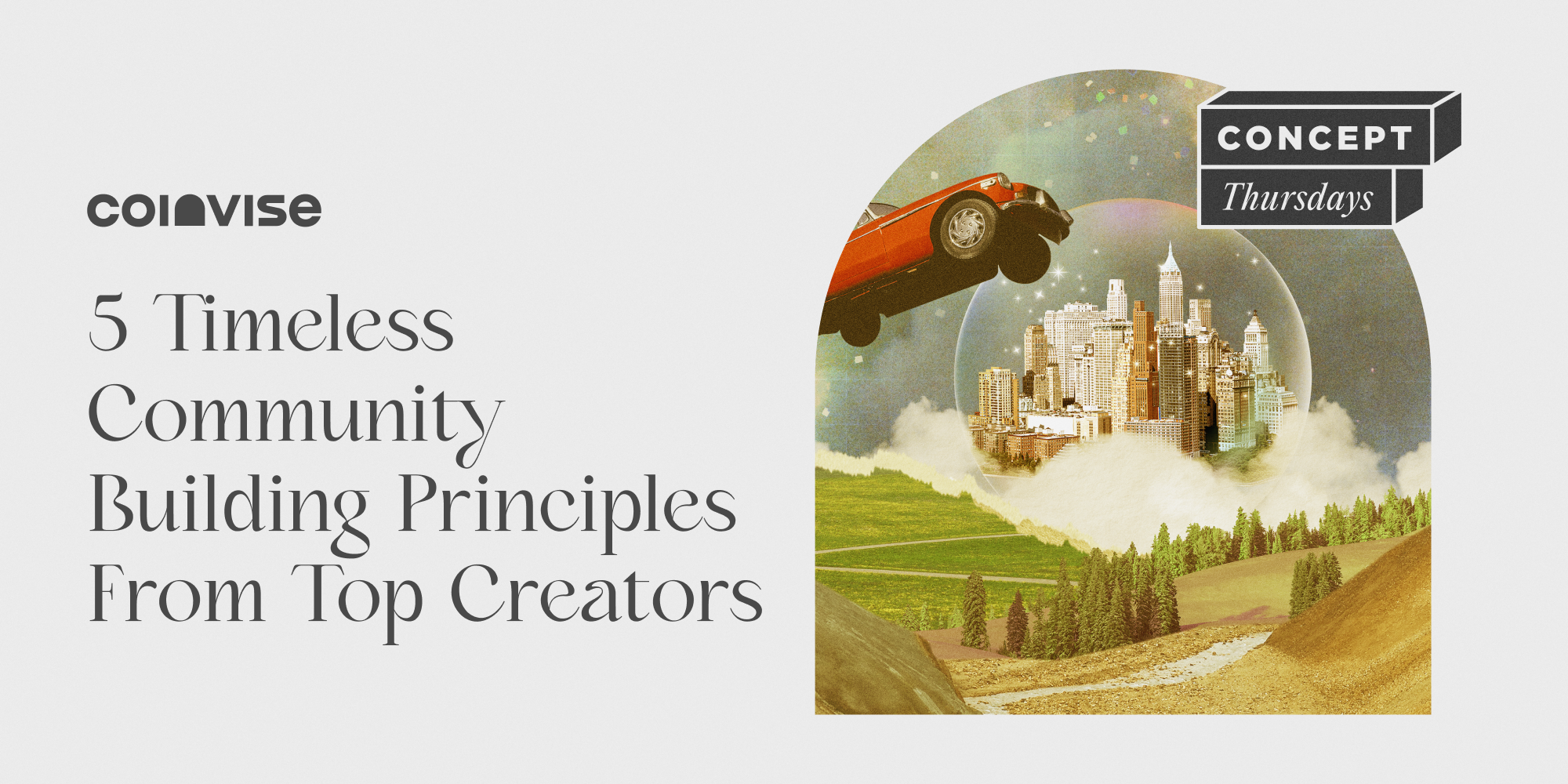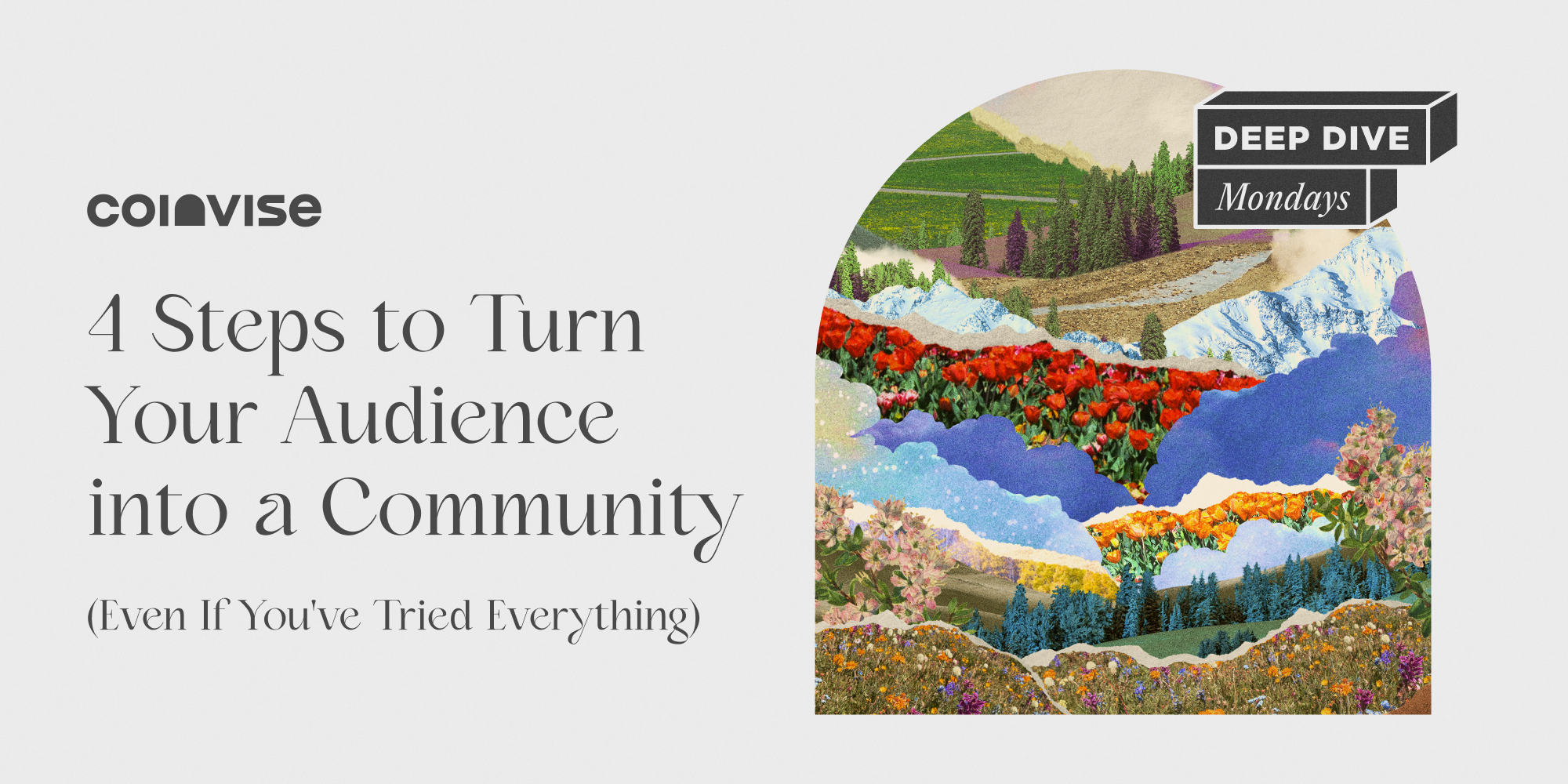5 Timeless Community Building Principles From Top Creators
Hey there!
In today's edition of our Concept Thursdays, five top community builders will share with you what they did differently to make their projects successful.
Modern communities might soon replace traditional organizations, and community building will soon become THE skill to master for the next ten years. If you know how to gather people together, you can shape the world.
Unfortunately, there's still a lack of thriving builders sharing what they learned along their journey, making it hard for newcomers to start with the best practices.
So we interviewed 5 successful community builders and asked them a straightforward question:
❌ Unsupported block quote)
1 - Justin Vogel, Founder of Safary
Safary is the #1 destination for web3 growth leaders to exchange tactical insights.

“I saw what others did and took the opposite approach.”
I saw most people doing the same things when building communities in late 2021 when I was looking to launch Safary. They were all launching a Discord server open to all, putting little effort into understanding their members’ needs.
I quickly realized by browsing in those communities that open text-based Discord communities are a disaster to manage. Sure, the acquisition is easy, but engagement and retention are difficult. Most communities I was in were, in reality, just audiences.
After that, I decided to take the opposite approach to build Safary and created a closed community. I didn’t fool myself into thinking size mattered.
Today, we onboard new members in batches and hop on calls with every single one of them. This ensures they are a great fit for the community, can bring value, and that people are onboarded at the same time with the same expectations and hype – so no one enters a dead server.
Those 1:1 onboarding calls for Batch 3 have been a huge value add for understanding our members and helped us define (and refine) the specific segments we welcomed into the community to ensure we could deliver on a value prop that appealed to them. We talked to 60 web3 growth leaders in the span of <2 weeks.
By restricting access to our community and taking the time to know each of them personally, our members are incentivized to behave and don’t shill their project or spam other members like we see in many communities. This makes it way easier to manage, and I’ve never had a problem with security/scammers in Safary and have been running it for 6+ months, which is basically unheard of.
2 - Fancy, Founder of Radar
Radar is the first community owned and powered futures engine, discovering, incubating, and delivering better futures.

"You have to find the perfect spot for someone to start driving their own community within the community."
One thing I understood early on after building my first tokenized community was this need to not start with a paid team, with people showing up every day to find something to do and look busy.
What's very important when you're building at the beginning of a community is finding the perfect spot for someone to start driving their own community within the community.
With Radar, I try to facilitate new spaces for people to step into. It's essential to define an organization chart the same way traditional companies are doing and try to place people into those roles so that they have personal responsibility for the work they do.
Finding the perfect people to take ownership within that organization chart was undoubtedly the biggest unlock for Radar, but also what took the longest time.
Today in Radar, there are many leaders, not just one leader or one core team. You have many leaders within a community, so there's no need for a core team because these people lead on their own.
3 - Mark Tan, Head of Community at Odyssey
Odyssey is on a mission to onboard 1M people to web3.

"It's essential to nurture a sense of belonging, inclusivity, accessibility, and acts of service."
In my opinion, there are multiple essential factors in building a tokenized community.
Firstly, you have to create a sense of belonging. Web3 is all about shared ownership. It's essential to show new members they belong and have a voice in the future of the community.
To me, creating a sense of belonging requires creating an inclusive community - one with simple pathways for members to participate in an inclusive and safe environment. One where they can experiment and discover the new possibilities Web3 brings to the table, without the fear of being judged or scammed.
Related to this, I think accessibility is key for building a successful tokenized community.
Tokenized communities are pure management. Members contribute not because they HAVE to, but because they WANT to. This means if you want to create a community with a high level of engagement, you need to develop simple, transparent, and accessible processes for participation. Proactively ensuring members know how to engage with others and have the resources to contribute to the community.
Finally, the last crucial element for a successful tokenized community is what I call "acts of service."
This means creating a community underlined by a spirit of help and gratitude, strengthening the relationship, and bonding members together. As a community leader, you can, for example, define a strong narrative within the community so members can build relationships with shared purpose and values.
4 - Jeff Kauffman Jr., Founder of Jump
Jump is a tokenized community for marketing and advertising professionals at leading agencies, Fortune 1,000 brands, and web3 startups.

"Creating trust might be the single most important factor of a successful Tokenized Community"
To me, trust is essential in building a tokenized community. I knew from the beginning that, to build a successful community, I needed to be "doxed" - meaning exposing my real identity to the world.
When launching Jump in 2021, I realized that many founders didn't want to back their projects publicly and didn't want to put a face to their projects. I believe if you're willing to talk publicly about the problems you're solving, regardless of how unregulated the environment is and how early we are, it says a lot about what you're building and the trust you're trying to create.
Another important factor in building a tokenized community is meeting with members individually and understanding their needs. For example, with Jump, after a member goes through our application form and is accepted, I hop on a call with them. Last year only, I jumped in over 700 1:1 zoom meetings to establish trust, both in terms of members building trust in me and myself building trust in them.
5- Joyce Yang, Founder of Global Coin Research
Global Coin Research (GCR) is a Community of Investors & Researchers in Web3

“You need to support with everything you can your 5-10 most passionate contributors”
One of the most important things that I understood early on is to bootstrap correctly. What I mean by that is supporting with everything you can the top 5-10 community members that put tremendous effort in your community early on.
Building Global Coin Research, I quickly realized talents are everything in a community, especially in its infancy, and these five people leading and participating in your organization will make or break your DAO. Even just one person leaving the community can have a profound impact, and it's essential to find someone to fill that gap immediately.
Talent is your most precious asset as a community builder, and you should support those willing to put in some work at all costs.


